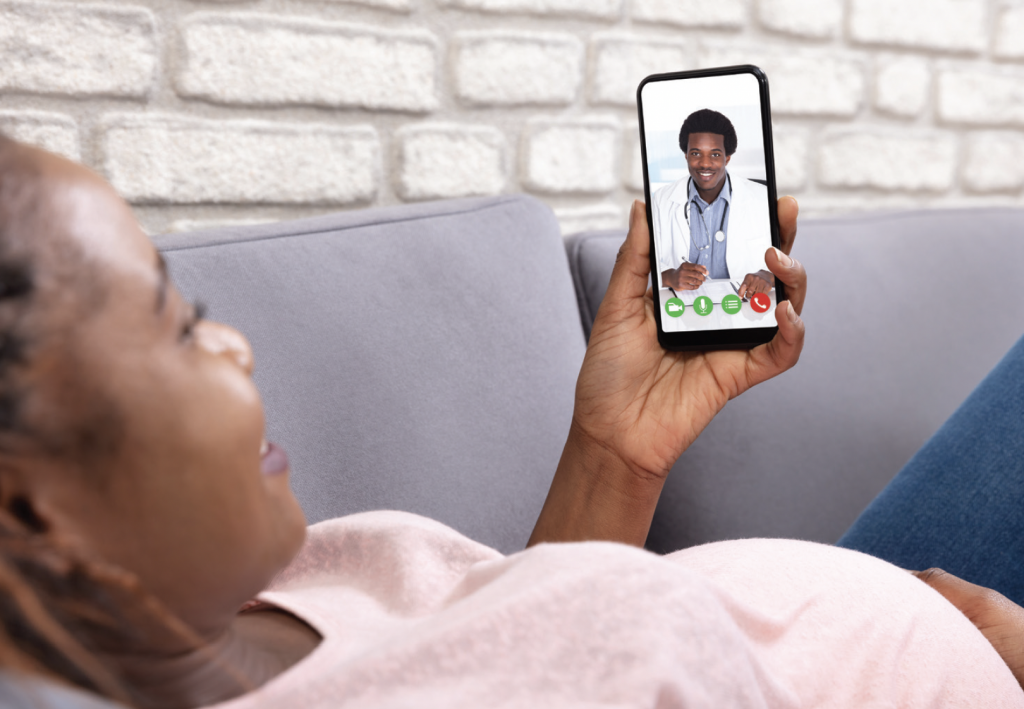
Dr. Mark Rosing, chair of the Department of Obstetrics and Gynecology uses a tragedy to illustrate the benefit of telehealth to both patient and provider.
“It was shortly after COVID-19 started, and we weren’t seeing as many patients because of the anxiety over possible exposure to the virus,” he says. “A sonographer, after giving an ultrasound at our Bronx Park office, saw that the patient had a non-viable pregnancy. This was on a day when there wasn’t a physician or midwife at the site. Since the sonographer is not supposed to tell the patient this and what the options are to manage it, I had to get on the phone with the patient, somebody I never met and didn’t know anything about, and tell her and her partner that she had lost the pregnancy. I couldn’t see the look on her face when she heard this news and so I didn’t know how to empathize with her.
“It was so awkward and awful, a very difficult time for both of us. It was shortly thereafter that we started offering patients video telehealth visits. To me, it is so profound to see someone’s face in knowing how to communicate with them.”
Even prior to the advent of COVID-19, Dr. Rosing had been a keen proponent of telehealth services – although OB/GYN, because of its hands-on nature, may not be viewed as a specialty particularly conducive to its use. He had attended lectures on the subject and had explored partnerships with several startups that use digital health to monitor patients vital signs and engage them in their own healthcare.
Early during the pandemic, his department started providing patients with digital ways to monitor their blood pressure and glucose levels. He encouraged pregnant patients to work with various platforms that provide engagement and education. As an example, he and his colleagues have been trialing the use of a smart fetal heart rate monitor called HeraBeat. This is the first checkpoint to determine if a fetus is under distress. Several pregnant patients at the department’s Arthur Avenue and Bronx Park sites can now check, record and share their baby’s heart rate from the comfort of their homes using the application’s Ultrasound Doppler technology.
“We hope to use it to check the heartbeat during or between telehealth encounters and eventually do remote modified NSTs (non-stress tests) to assess fetal wellbeing in some high risk situations.” With telehealth, the department has found that patients who were once difficult to connect with are increasingly reachable. “Patients have busy lives,” says Dr. Rosing. “And, many people still don’t want to ride public transportation because of the threat of exposure to the virus. Before telehealth, we found that many patients could never make or keep their appointments.”
Many patients assume that due to the nature of OB/GYN, in-person visits are mandatory. That is actually not the case, says Dr. Rosing. “A lot of times we do a thorough physical exam, but this is not necessary during every appointment. We don’t really need to do a pelvic exam or paps (pap smears) every year. [The guideline for younger women is every three years and for older women every five years.] With our OB patients, many of the prenatal visits are just to send patients for labs. Not all encounters need to be in person.”
He estimates that now as many as 40 percent of patient visits in his department are conducted through telehealth. Often it depends on getting patients acclimated to the technology and giving the provider sufficient comfort. “We have to make sure the technology is easy and patients have good broadband. It’s not something that is divided by age, ethnicity, language or socio-economic status.” While he feels his department is ahead of the curve in its adoption of telehealth, he admits that not all of his colleagues share his feelings.
This, he adds, is not a question of a provider’s age. Doximity, a leading telehealth provider, agrees. In a recent survey, it found that doctors in their 50s or older were more likely to use telehealth than those in their 30s or 40s. Dr. Rosing is sold on the benefits of telehealth, although he believes more work needs to be done in refining the platforms. He finds that eye contact in a telehealth meeting can often be more impactful for both physician and patient than one in-person. “If you’re looking at the screen and they’re looking at you, it’s often better than if they’re in your office and you’re typing on a computer,” he says. “It’s a really important way to connect with patients, to make it very easy, to make it a friendly experience. I think the power around this is incredible and I think we need to get ahead of this.”




